The sidestroke is a swim stroke swum on the sides. It is not used in competitions and therefore less known nowadays.
Because it is swum on the side and uses asymmetrical movements of the limbs, it can look peculiar the first time you see it.
Nevertheless, it can add some variety to your swim sessions.
Sidestroke Video Animation
Here’s an animation of the sidestroke:
Body Position
For the initial body position, consider you pushed off the wall and are floating on your side.

Your legs are straight. Your bottom arm is extended forward underwater, and your top arm rests flat on the side of your body.
You maintain this sideways position during the whole stroke cycle.
Head Position
Your head should be in line with your spine and turned sideways and slightly upwards. In fact, one cheek and ear should be in the water, the rest of the face being above water.
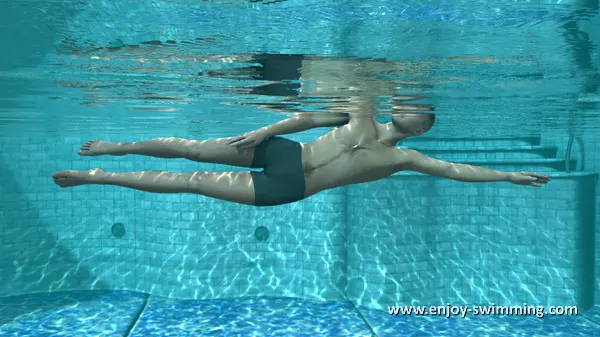
It’s a little bit like resting your head sideways on a pillow. This allows you to breathe easily and to have good visibility to the side.
Arm Stroke Movements
In the sidestroke, both arms move simultaneously but execute different movements. We will call the bottom arm the leading arm and the top arm the trailing arm.
At the start of the stroke cycle we have the following:
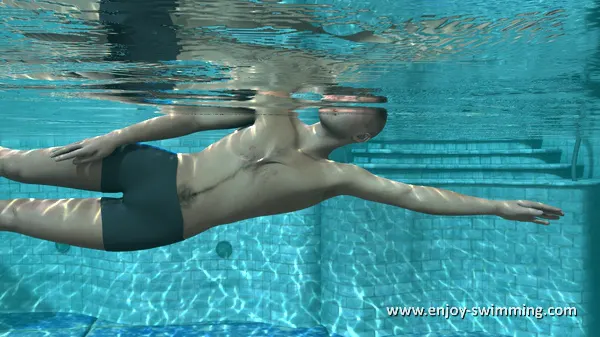
1) Your leading arm is extended forward with the palm facing downwards.
2) Your trailing arm rests on your side.
The arms flex during the first phase of the stroke cycle:
3) Your leading arm sweeps backward with a semicircular movement. Your palm pushes water backward, first sweeping downwards and backward and then upwards and inwards.
At the end of this movement, your hand is in front of your chest, with the palm rotated upwards. This is the propulsive phase of your leading arm.
4) Your trailing arm moves forward, bending mostly at the elbow. Your hand slides forward along your body until both hands meet in front of your chest.
Ideally, at this moment, your palms are facing each other with the palm of your trailing arm rotated downwards. This phase isn’t propulsive for your trailing arm.
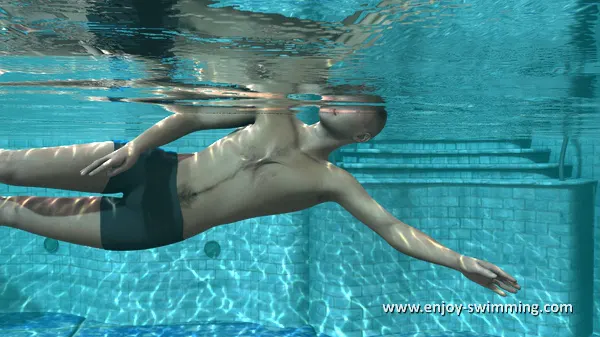
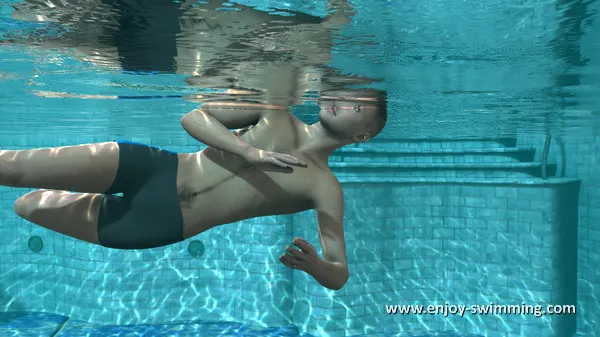
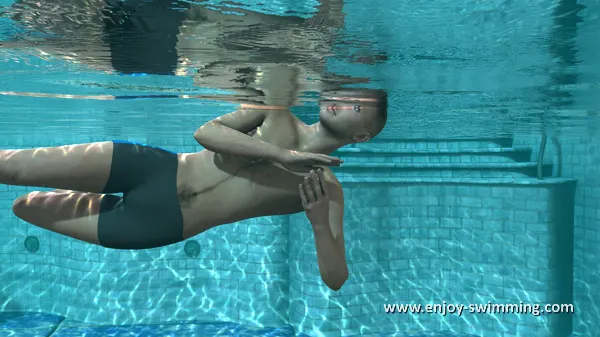
After that, your arms extend and move back to their initial positions:
5) Your leading hand moves forward in a straight line. The palm rotates from an upward to a downward facing position. This phase isn’t propulsive for your leading arm.
6) Your trailing hand executes a semicircular backward sweep. Your palm moves first backward and downwards, then backward and upwards, until your arm is fully extended again and resting on your side.
This is the propulsive phase of your trailing arm.
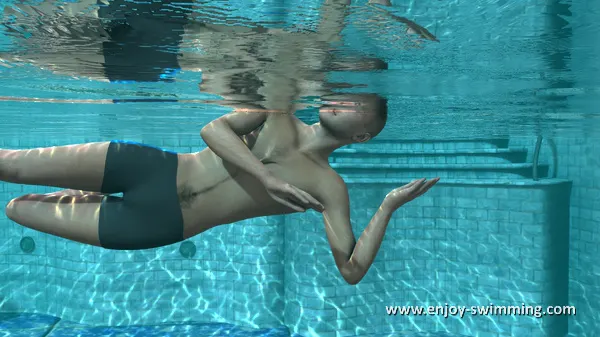
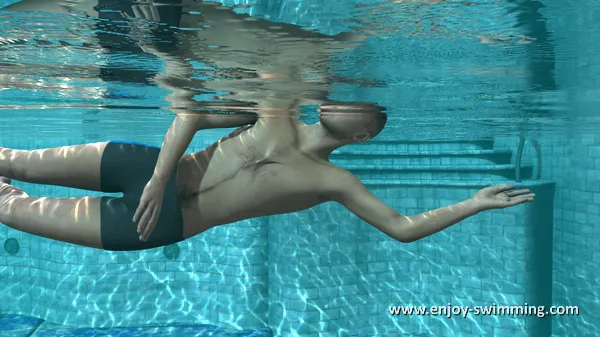
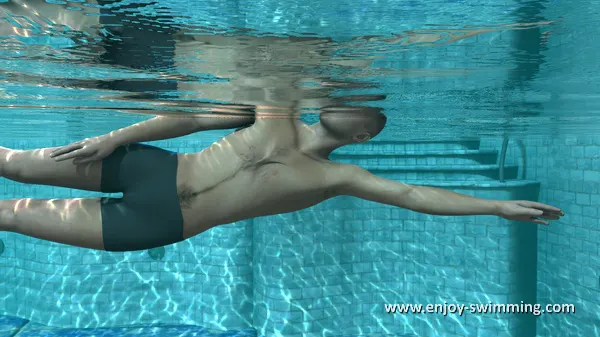
7) A short glide phase is observed before a new stroke cycle begins.
Apple Picking Analogy
An apple picking analogy is often used to explain the arm movements easily:
1) Your leading arm picks the apple, and your trailing arm rests on your side.
2) Your leading arm sweeps backward, your trailing arm sweeps forward.
3) Your hands meet in front of your chest and your leading hand gives the apple to your trailing hand.
4) Your hands move apart and back to their initial positions, your trailing hand throwing the apple away behind you at the end of the movement.
5) A new stroke cycle begins.
Conclusion
This first article about the sidestroke has discussed the body position and the arm movements. Part 2 explains the leg movements and the coordination between arms and legs.
Related Pages
You may also be interested in the following articles that cover the sidestroke’s swimming technique:
